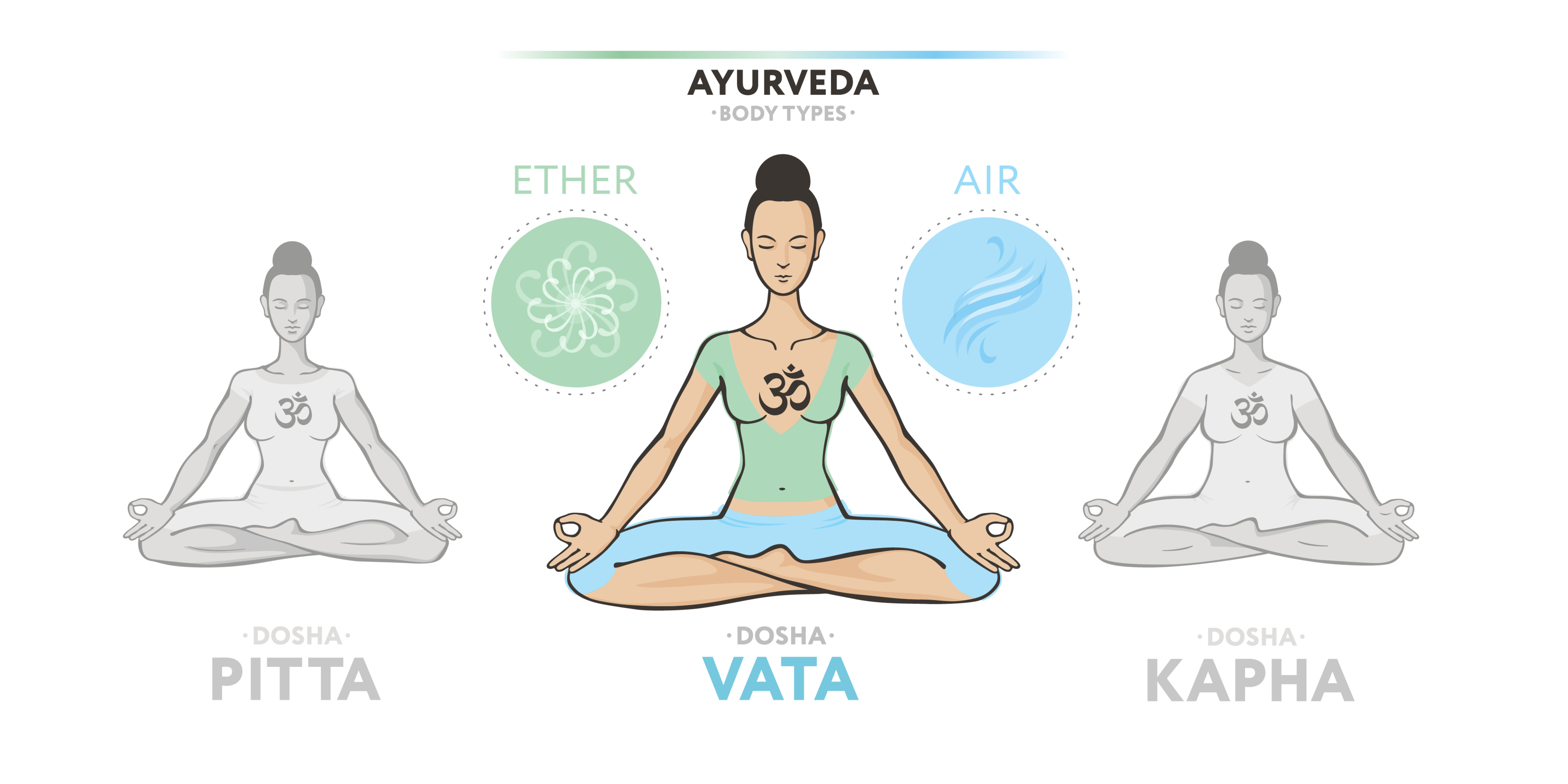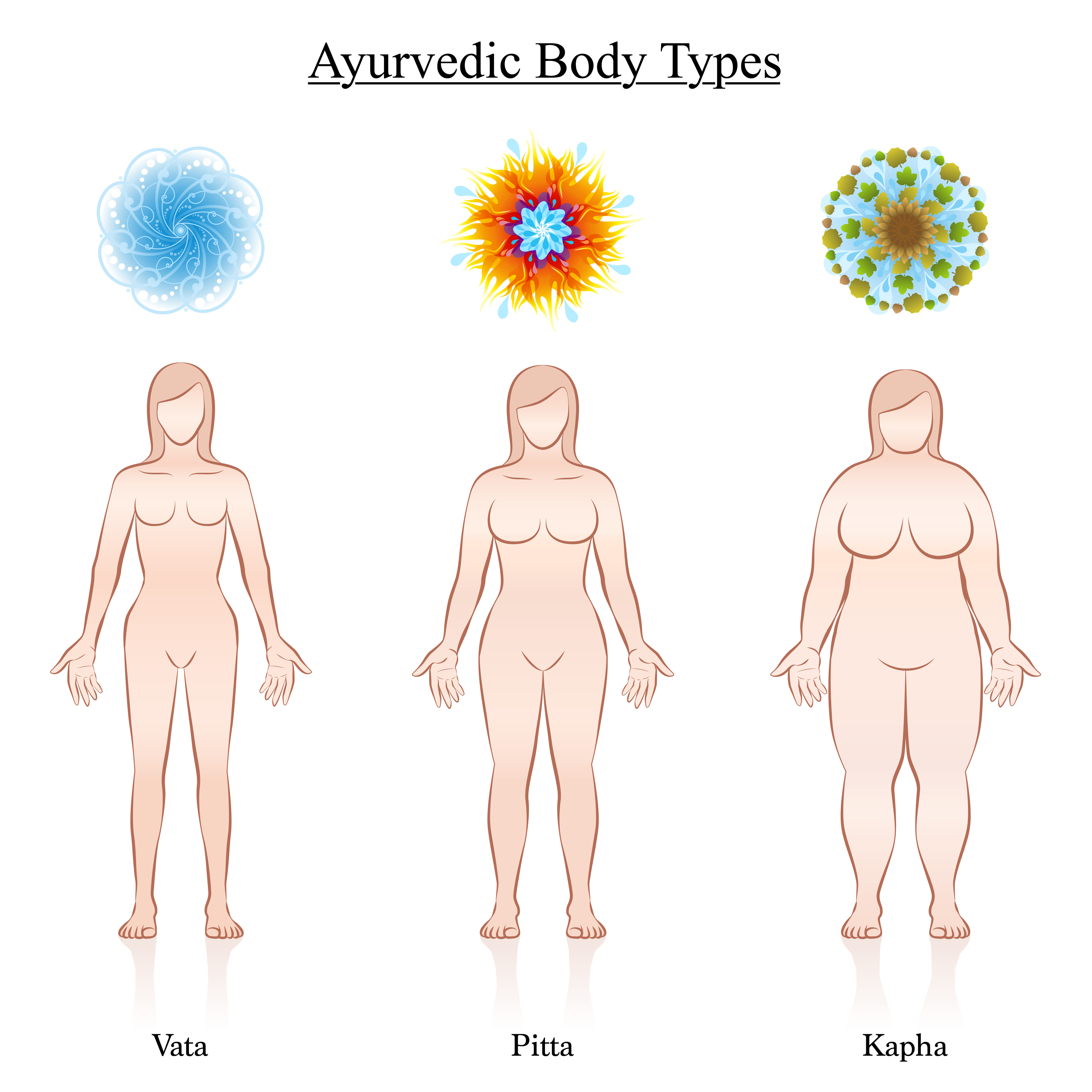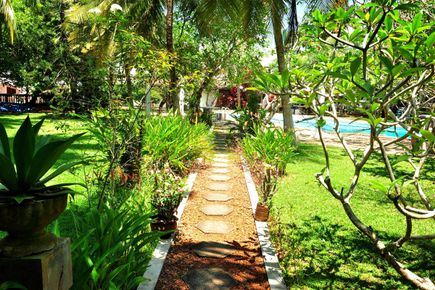Do you have a high enthusiasm, a slim body build, and tend to have irregular hunger? Then you might be one of the people in whom the Vata dosha is dominant.
This blog post is all about the Vata type, which is influenced by the elements of air and space. From the characteristic traits to potential health challenges and dietary tips, as well as lifestyle recommendations – here you will learn how to find your inner balance as a Vata type and sustainably improve your well-being.
Table of Contents
- Vata, Pitta & Kapha: The Ayurvedic Types Explained
- What is the Vata Type? – Personality Traits & Body Structure
- Vata Type Men & Vata Type Women
- The Vata Dosha in the Workplace
- Typical Illnesses and Symptoms of Vata Imbalance
- Ayurvedic Nutrition for the Vata Type
- Lifestyle Tips for the Vata Type
- Vata-Pitta and Vata-Kapha: Mixed Types and Their Specifics
- Balancing Your Doshas with an Ayurvedic Retreat
Vata, Pitta & Kapha: The Ayurvedic Types Explained

In Ayurveda, people are classified into three main doshas: the mobile and creative Vata dosha, the passionate and fiery Pitta, and the balanced and steady Kapha. These constitution types determine your physical and mental characteristics as well as your health status.
The key to well-being lies in recognizing your dominant dosha and any imbalances. To find out which Ayurvedic type you belong to and whether Vata is dominant, there are various tests and methods available. The beginning of an Ayurvedic cure always includes an initial examination with dosha determination by an Ayurvedic doctor. Based on your individual constitution, the specialist will then create your treatment and nutrition plan for the cure.
There are also many online tests available where you can determine your constitution type yourself. While these are less accurate than a determination by a specialist, they can provide a good orientation to start with.
What is the Vata Type? – The Essentials Summarized
The term Vata comes from Sanskrit and translates to “to move” or “to excite.”
People with a dominant Vata are considered particularly creative, enthusiastic, and communicative. At the same time, they tend to be restless, nervous, and have irregular sleep and appetite, especially when their Vata is out of balance.
For Vata individuals, it is essential to establish a regular lifestyle and ensure sufficient time for relaxation.
Typical Traits of Vata Types
Vata types are true multi-talents: They are curious, creative, and always in motion – both physically and mentally. They love change, enjoy trying new things, and quickly feel comfortable in unfamiliar situations. Their enthusiasm for the new makes them passionate travelers who enjoy exploring foreign countries and cultures.
One of the greatest strengths of Vata types is communication. With their open nature and a natural intuition for people, they easily make connections. At the same time, they experience emotions – both their own and those of others – especially intensely.
However, this flexibility also has its downsides: Vata types can be impulsive and easily overwhelmed, as they tend to juggle many projects at once without completing them. In the case of excess Vata, nervousness, concentration difficulties, and feelings of being overwhelmed can arise. Their sensitive character also shows in their heightened sensitivity to external influences such as noise, cold, or stress. Cold and wind, in particular, affect them, which is why they prefer a warm, humid climate.
Vata type: Appearance & Physical Constitution

Vata types are characterized by a slender body frame, often with delicate facial features, as well as dry skin and hair. They are also more prone to feeling cold, with a tendency towards cold hands and feet.
Due to their fast metabolism, low appetite, and irregular eating patterns, Vata individuals often remain slim, although their energy levels can fluctuate significantly throughout the day.
Vata Type Man & Vata Type Woman
Vata-Type Men are often creative, versatile, open-minded, and enthusiastic. They love starting new projects and developing fresh ideas but sometimes struggle to follow through with them in the long run. Their impulsiveness can challenge them in stressful situations, which is why they benefit from clear structures and regular breaks.
Vata-Type Women are characterized by sensitivity, empathy, and strong communication skills. They have a fine sense for aesthetics and creative activities but are also prone to overwhelm and emotional exhaustion. A harmonious environment and regular relaxation are essential for maintaining their balance.
The Vata Dosha in the Workplace

The mind of Vata-types is brimming with ideas, and due to their creativity, they often find themselves in artistic professions. They thrive in dynamic, varied work environments that allow for personal growth and development.
With their flexibility, creativity, and abundance of ideas, Vata-types bring many strengths to their professional lives. However, they tend to take on too many tasks at once, leading to confusion and overwhelm.
Clear structures and regular breaks help them stay focused and make the most of their strengths.
Typical Illnesses and Symptoms of Vata Imbalance

Vata is the most disease-prone of the three doshas. According to Ayurvedic teachings, about 80 different diseases are attributed to an imbalanced Vata. The musculoskeletal system is particularly vulnerable, which can lead to conditions such as rheumatism, joint pain, or arthritis.
Especially during physical and mental overload, Vata types tend to experience digestive issues, headaches, sleep disorders, heart conditions, dizziness, and weight loss.
Ayurvedic Nutrition for the Vata Type

Vata types especially benefit from sweet, sour, and salty foods. However, they should avoid spicy, bitter, and astringent dishes.
Especially during stress, Vata types are prone to bloating, constipation, and fullness. To prevent digestive issues, Vata types should opt for easily digestible and warming foods. A Vata-balancing diet should be warm, cooked, soft, and creamy, and include plenty of liquids and oils.
Creamy soups, vegetable stews, curries, roasted vegetables, and porridge are ideal for Vata types. Additionally, you should drink plenty of liquids if you have a Vata imbalance, but avoid cold drinks.
List of Vata-reducing foods:
- Root vegetables: Carrots, pumpkins, parsnips, beets, sweet potatoes
- Fresh fruits: Bananas, grapes, avocados, plums, mangoes, fresh figs, oranges
- Rice and wheat
- All fats and oils, especially sesame oil and ghee
- Milk (preferably warm, with spices)
- Nuts and nut butters (in moderation)
- Spices: Ginger, salt, cinnamon, cardamom, fennel, cloves, cumin
Lifestyle Tips for the Vata Type

Vata-types thrive in a harmonious daily routine with fixed structures. Warm, nourishing foods and regular meals support their delicate digestive system.
Gentle forms of exercise like yoga or meditative walks help channel their restless energy and prevent an imbalance in their dosha. Rituals that provide warmth and comfort, such as relaxing oil massages, soothing herbal teas, or a cozy bath, are especially beneficial.
Vata-types should take time to slow down and consciously make time for relaxation and restful sleep to prevent stress and exhaustion.
Vata-Pitta and Vata-Kapha: Mixed Types and Their Specifics
Pure doshas are rare. In most people, you will find elements of two or even all three constitution types.
Vata-Pitta Type
The Vata-Pitta type combines the lightness and mobility of Vata with the warmth and intensity of Pitta. These individuals are often very dynamic, creative, and have a sharp intellect, but they can also be prone to stress and nervousness due to their constant activity.
An imbalanced lifestyle may lead to excessive mental and physical strain. It’s important to integrate soothing and cooling elements into their routine to keep balance. Regular meals with warm, nourishing foods and calming spices such as cinnamon and fennel can help maintain equilibrium.
Vata-Kapha Type
When the airy, creative, and dynamic Vata meets the calm, stable, and resistant-to-change Kapha, a rather fluctuating combination arises. These opposing characteristics can create inner tensions, so it’s not surprising that the Vata-Kapha type occasionally struggles with frustrations.
To avoid imbalances, those with a Vata-Kapha constitution should find a good balance between rest periods and gentle movement. Regular meals and a well-balanced, easily digestible diet rich in nutrients can help balance both doshas.
Balancing Your Doshas with an Ayurvedic Retreat
To determine your Dosha type with certainty, a qualified Ayurveda doctor is the best point of contact. During an Ayurveda retreat, you will not only receive a comprehensive Dosha assessment, but also personalized ayurveda treatments and a diet plan tailored to your unique type. Browse here for the best Ayurveda offers:











Leave a reply